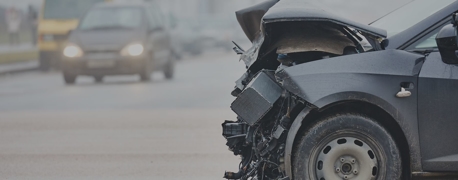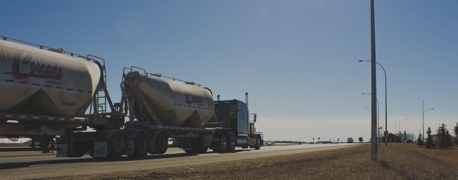What Is Truck Platooning?

If you are watching the Tour de France, there is no doubt you will see big groups of cyclists who are traveling in a line. For the average viewer, it is probably confusing to witness 15 bikes lining up one right after the other. However, when using the science of aerodynamics, the benefits of “drafting” are soon realized, and it is understood that this drafting line is a necessary part of winning the Tour de France. Remarkably, technology companies want to utilize aerodynamics for something much bigger: truck platooning.
What Is Truck Platooning?
Truck platooning is the idea of trucks following closely behind each other while driving down the freeway. The goal of platooning is for the lead truck to take on the bulk of the headwind that sweeps down the highway. The vehicles following behind the head truck will have the benefit of not working as hard to propel themselves across thousands of miles of American soil. For this to be cost-effective, the following trucks must be 20 to 30 feet behind each other. To put this in perspective, the typical “safe” distance between two cars traveling 60 mph should be 88 feet; for trucks, a safe traveling distance might be twice that amount. However, truck platooning would tremendously cut that distance down.
How Does Truck Platooning Work?
The prototypes suggest that a human will drive the lead truck; however, the rest of the platoon may or may not have human drivers, depending on where automation technology stands in the next couple of years. Regardless, platoons would only work if the trucks following the lead truck could perform the same actions at stuttered time intervals. The lead truck would enter sequences of maneuvers into a computer, the computer would transmit the data to the second truck in real-time, and the second truck would perform the same action as the first truck. Therefore, the second truck would be “driving itself” through the commands sent by the first truck. Researchers are calling it “adaptive cruise control” that utilizes automated lateral and longitudinal vehicle control.
What Are the Benefits of Truck Platooning?
A truck squad has two main benefits when in platoon mode. From a financial standpoint, truck companies will save money on gas. Aside from employees, the second-largest expenditure of the trucking business is paying for fuel. However, Texas A&M estimates that platooning will save 12% on average fuel use per truck in a platoon. While 12% may seem like a low number, this averages $8,400 per truck in a platoon per year; $8,400 a year—just for riding behind another vehicle.
The other positive of platooning is environmental. The average commercial truck eats through 20,500 gallons of fuel every year. When positioned in a platoon, a truck can save 2,460 gallons of fuel per year, which would have a significant impact on the oil industry and a massive impact on carbon emissions.
Texas A&M Preparing for Platoons
Texas A&M is looking at a variety of highway stretches in Texas where platooning could be utilized without disrupting regular traffic patterns. The researchers have determined that 12 strips of roadway are worth investigating on a deeper level. A majority of roads are in the southeastern part of Texas where rural communities are more common. A&M has found that platooning in urban communities will slow traffic and will not make an impact on fuel emissions. Therefore, only rural roads are prospective “platoon accessible” pathways.
While companies continue to research the possibility of automated cars, platoons may be further off.
“It is hard to say when these companies will be coming forward with a ‘production-level’ platooning technology,” said an autonomous vehicle management analyst.
What It Will Take for Truck Platooning to Work Across the U.S.
For truck platooning to become the accepted standard in the trucking industry, there are a few widespread changes that will have to take place:
- Truck platooning technology must go through further development to help ensure its safety and efficacy.
- The infrastructure of American roadways must be upgraded to allow for safe truck platooning.
- Platooning must be tested against real-life traffic conditions and motorists.
Ideally, truck platooning would be possible across multiple brands or companies. Platooning may also be more likely and possible as the U.S. and the rest of the world transition to self-driving passenger vehicles.
Truck Platooning Safety
The safety of truck platooning is of course a primary concern. While it may be better for the environment and may save trucking companies considerable amounts of money, it needs to be safe. One of the issues associated with truck platoons involves other vehicles and their ability to safely merge onto a road that has a platoon of three or more trucks. Will motorists be able to merge between trucks in a convoy? Will large platoons of trucks prevent motorists from merging onto busy roadways? These are factors that will need to be addressed as truck platooning is researched and tested.
At Arnold & Itkin, we are concerned with the safety of all motorists. Our truck accident lawyers fight for people who have been injured in crashes involving 18-wheelers, semi-trucks, and other commercial vehicles, and we are prepared to lead the way as cases involving truck platooning and autonomous driving arise. To find out more about our firm and how we can help you, call (888) 493-1629.
- Categories


